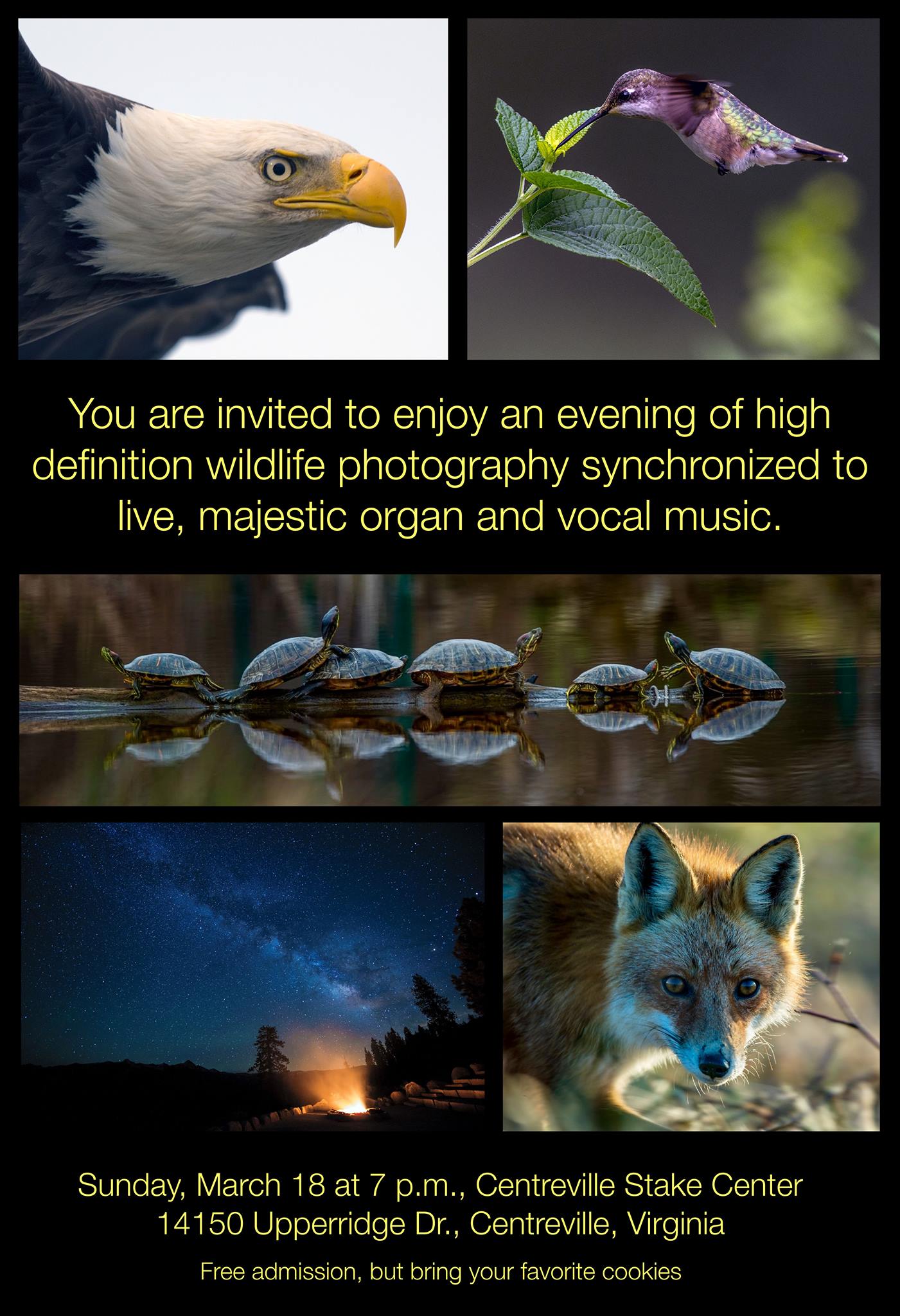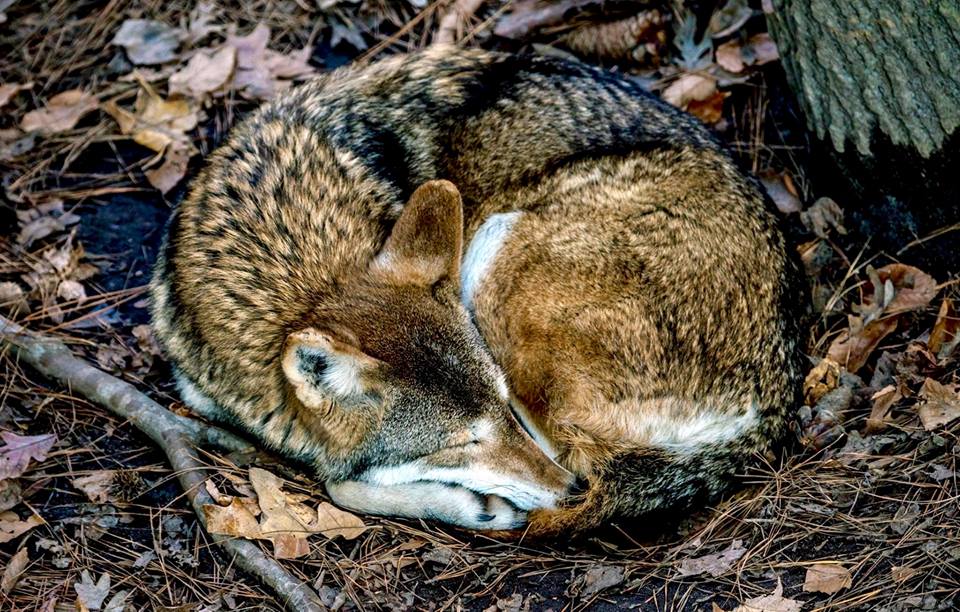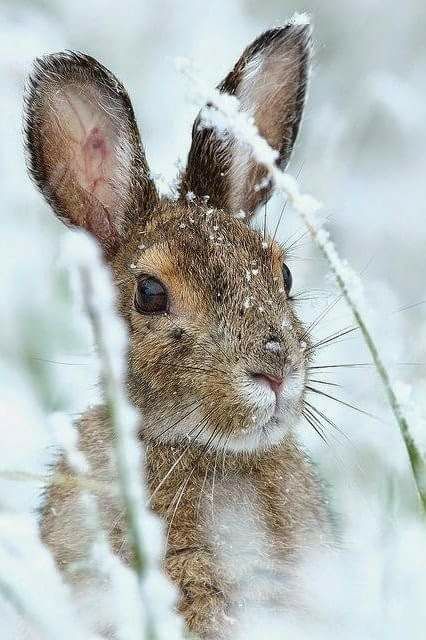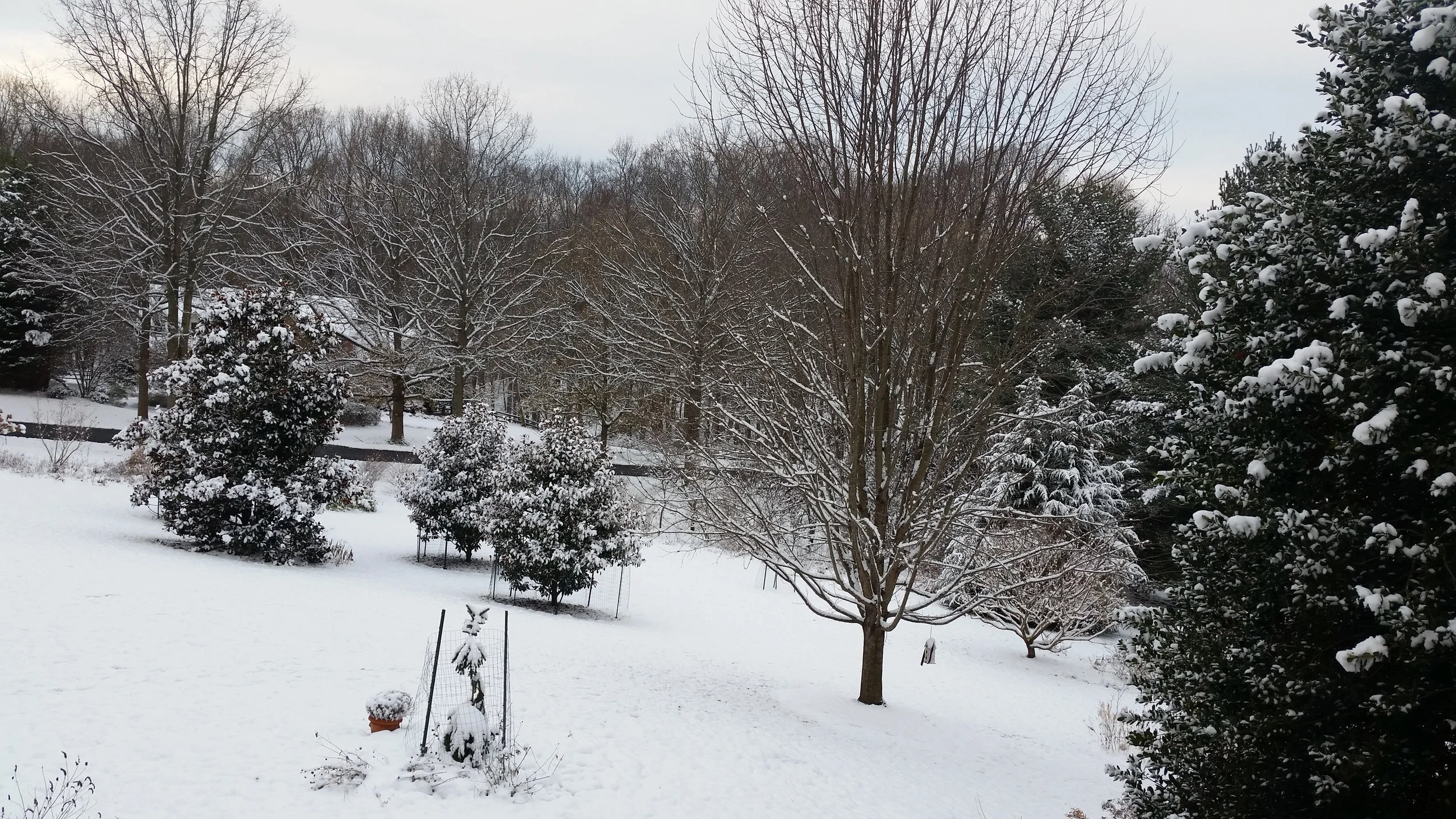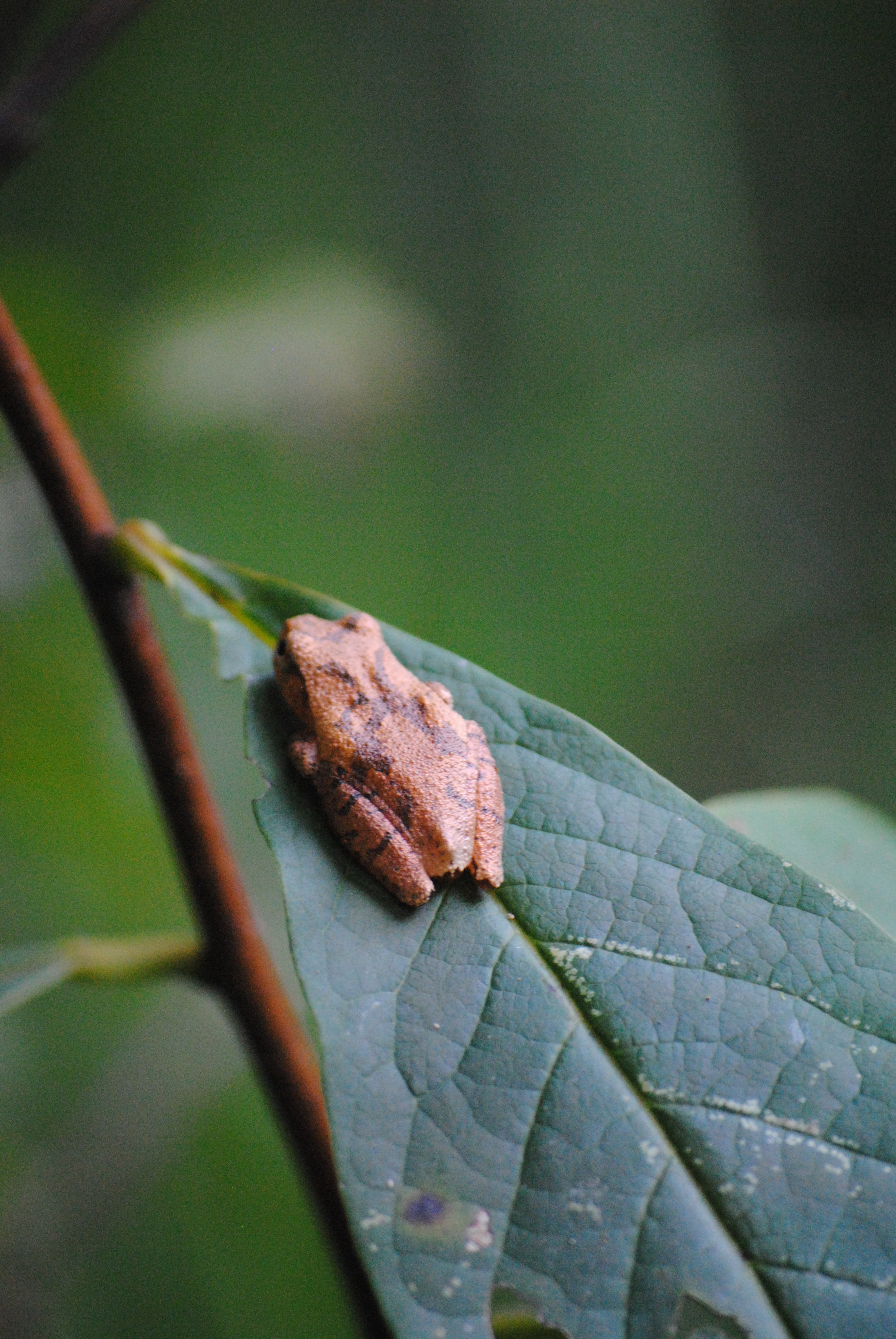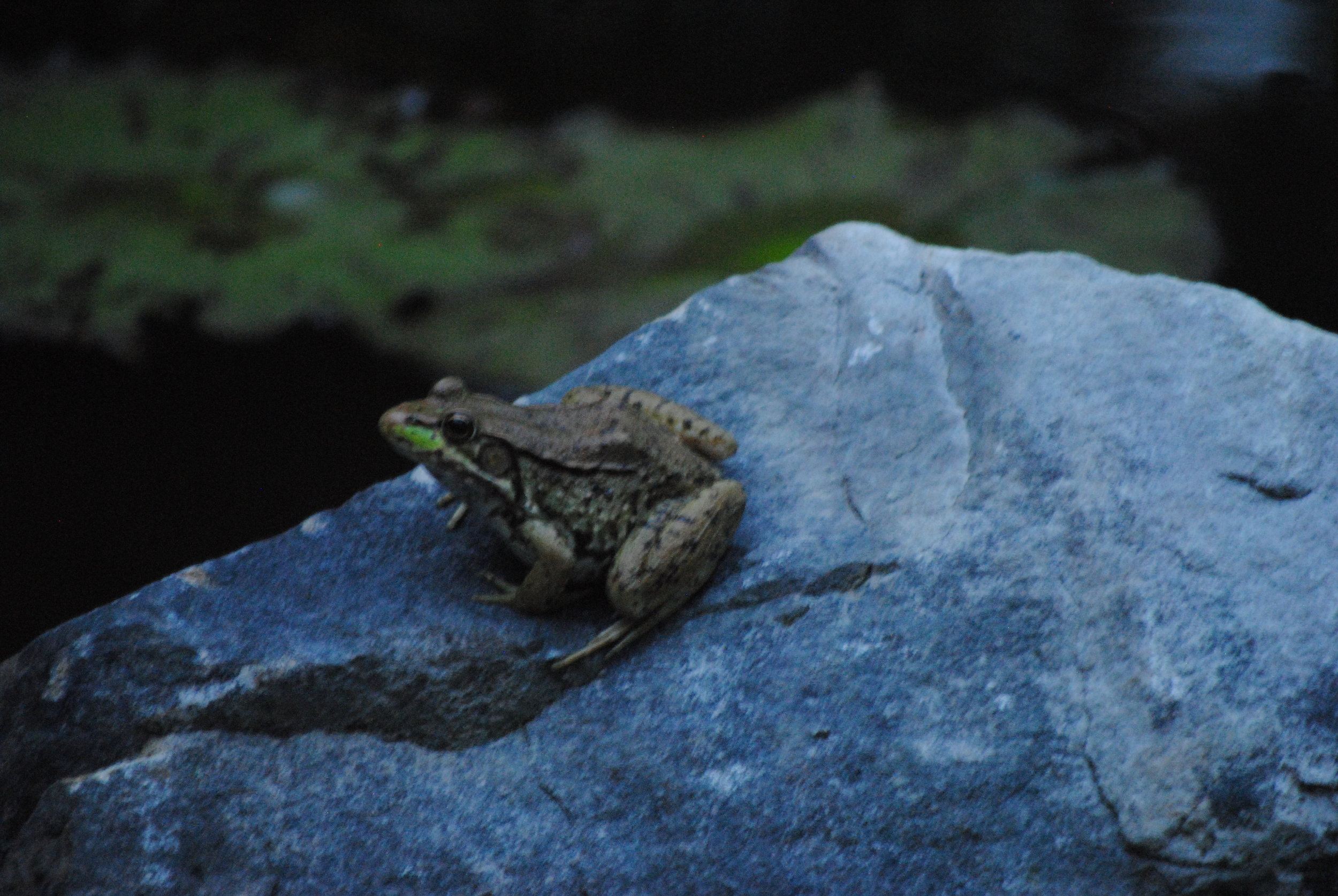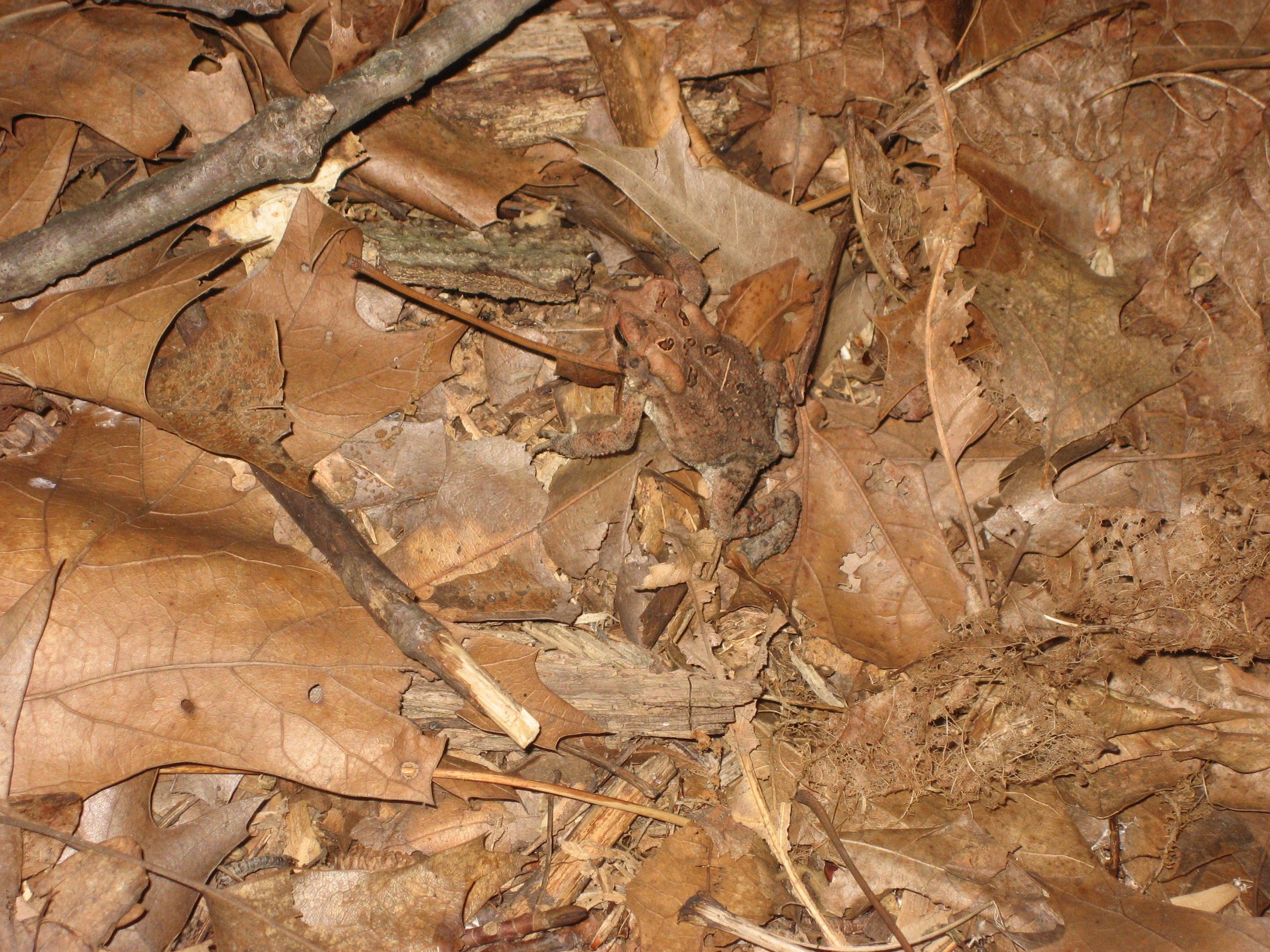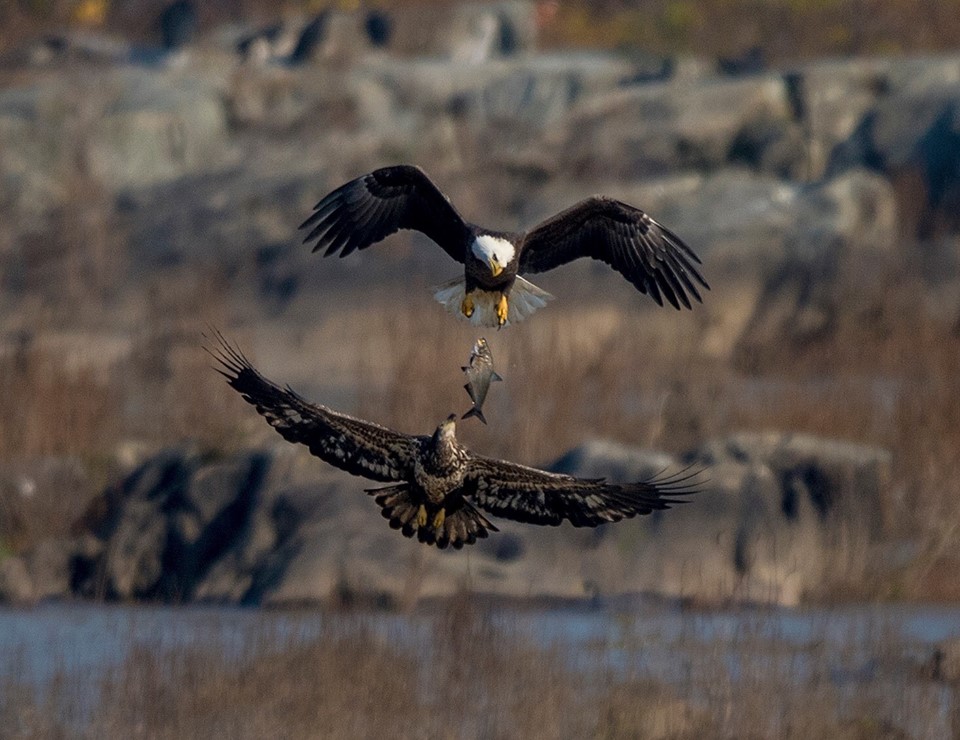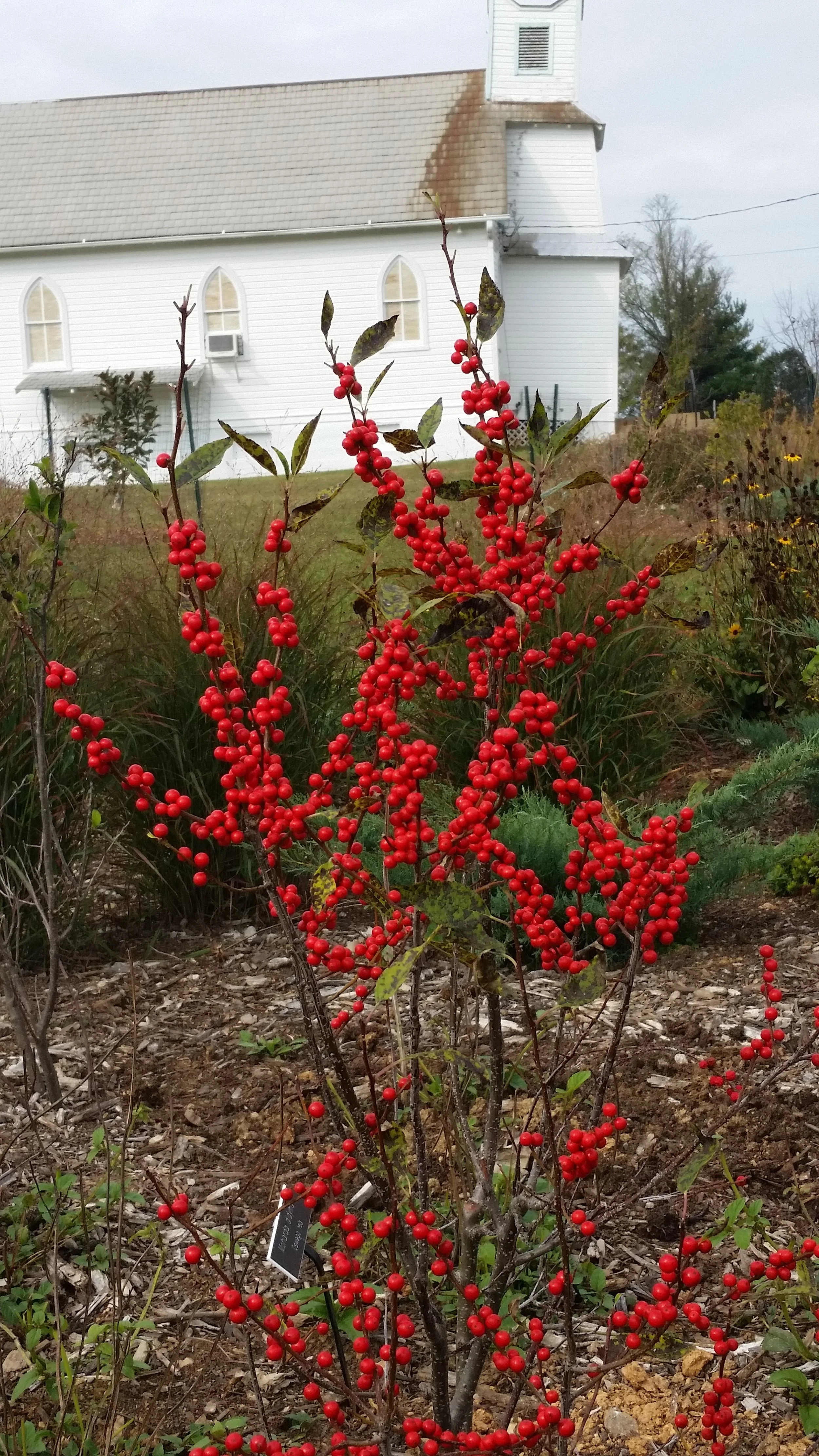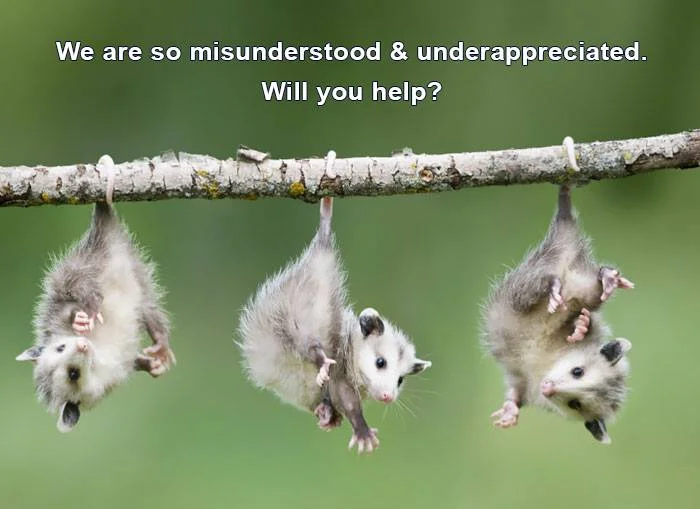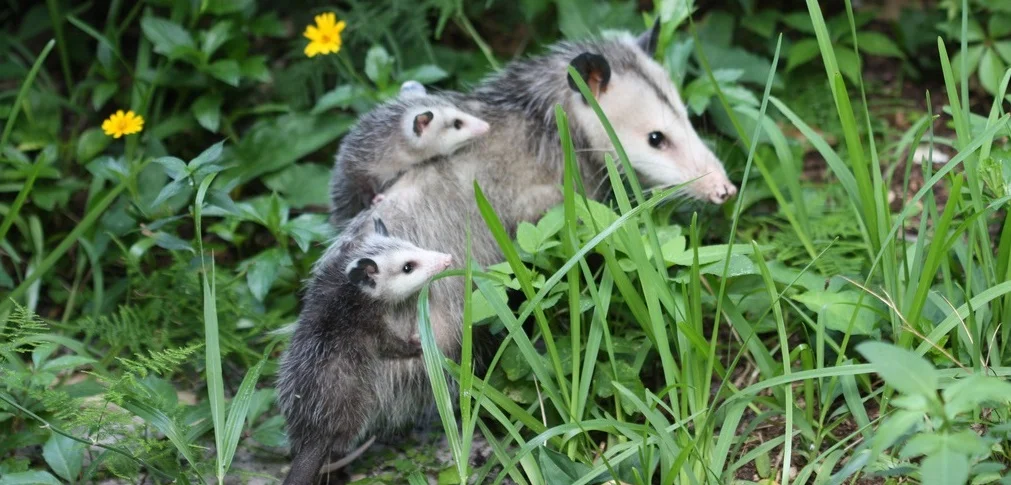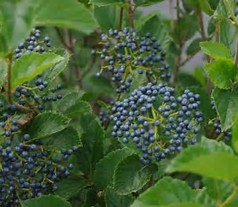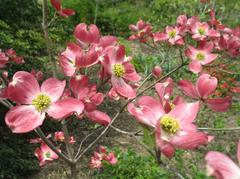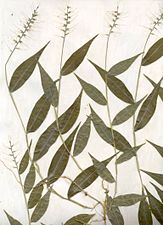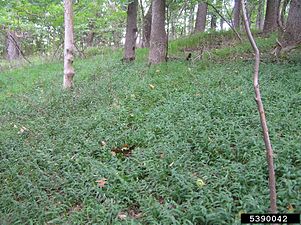Ralph Johnson is a local photographer and member of LDS Earth Stewardship. He is sharing his photography with organ music accompaniment on Suday, March 18 at 7 pm at the Centreville Stake Center. Should be a marvelous experience.
James Baird
Many of us in the DC area are mourning the sudden loss of James Baird, President of the Washington DC Stake.
Please continue to pray for his family and friends for comfort in the days and months ahead.
I would like to suggest that our Earth Stewardship East group plant a grove of native trees in honor of James Baird. Later this spring I will contact Lindy Baird to see if this would please her.
I remember in several conversations President Baird telling me how much he loved nature and felt close to God when he could spend time in the woods or looked up at the stars. He loved fishing and spending time camping, hiking or boating. He didn't have time to join our ESE activities but he was aware of us. I treasure the book he gave me as a peace offering. After a difficult interview with him, he surprised me with a gift, the book "Evolving Faith" by BYU evolutionary biologist Steven Peck. From that time on I felt I had a friend in James Baird.
A quote from a talk by James shared by Rachel Klein: “Many people have said they would die for the Lord or for his Gospel. I say, let us live for it. We will all die and that soon enough, until then let's live for our beliefs. Do you love Jesus? Then act like it by following his teachings.” — James Baird, November 2017
President Baird inspires me to be more kind, Spirit-guided and spontaneous, generous, faithful.
Fairy Diddles and Other Surprises
Photo: Paula Jean Hallberg
Known as fairy diddles in West Virginia, this red squirrel invites you to leave the comfort of home and explore our winter wonderland. We'll be out picking up trash along the Muddy Branch on Monday, January 15 (see our event post). It will be cold but satisfying. Hope you can join us. If not, venture out and see what you find.
Happy New Year
May your new year be peaceful, joyous and filled with nature's wonders. Some photos from local LDS photographer Ralph Johnson shot this winter in Virginia (fox and tufted titmouse) and Delaware (hooded merganser at Bombay Hook National Wildlife Refuge).
Merry Mistletoe
Did you know there are mistletoes native to the Chesapeake area?
Mistletoes are flowering plants in the Santalaceae family. Yes, Santalaceae. It seems unlikely, but the family’s name has nothing to do with Kris Kringle. It is derived from the sandalwood genus, Santalum, which is also a member. There are around 1,300 mistletoe species worldwide, and 2 rough groups in North America: American mistletoe and dwarf mistletoe.
All mistletoes are hemi-parasitic, meaning they parasitize trees but are not fully dependent on them for all functions. Mistletoes attach to stems of live trees and send root-like structures under the bark to tap the tissues for nutrients and water. Mistletoe leaves are green in color and can complete photosynthesis for energy, but would be unable to survive without the tree.
The berries either fall off and colonize stems below or are dispersed by birds. The sticky seeds can adhere to the plumage, feet, or beaks of birds to be scraped off onto new stems while preening, or get eaten to and later deposited on branches in droppings. Bird droppings are the primary way the plants spread; indeed, the word “mistletoe” means “dung on a twig” in Anglo-Saxon.
Dwarf mistletoe berries are not spread by birds. Instead, water pressure builds up in the berry cells. Eventually, the pressure builds to a point where the berry explodes, expelling the seed at up to 50 miles per hour, with a range of up to 60 feet!
A dwarf mistletoe seed being shot out by built-up water pressure. Photo credit: U.S. Forest Service
Though we often only think of mistletoe at holiday parties, it plays a significant ecological role in our forests. American mistletoes, while toxic to humans, are important food sources for many forest wildlife species. They bear fruit from late fall through early winter, a time when there isn’t much else for resident wildlife to eat. The berries are an important food for birds and small mammals, and the foliage is eaten by porcupines and larger mammals like deer and elk if they can reach it. Dwarf mistletoes are less important for food but the thick, scruffy, “witches’ brooms” that they create are excellent nesting sites for songbirds, red squirrels, flying squirrels, hawks, and owls. Studies in the western US have shown that a whopping 43% of spotted owls and 64% of Cooper’s hawks build their nests in “witches’ broom” tangles resulting from dwarf mistletoe infections.
Oak mistletoe (Phoradendron leucarpum) berries are very important for wintering wildlife. Photo by Mary Keim.
Mistletoe is important for many insects too. Their early-blooming flowers are important nectar sources for bees and other pollinators when not much else is available, and many insects only live on mistletoe foliage. Three butterfly species in the US are mistletoe obligates (meaning their caterpillars can only feed on mistletoes), but only one, the great purple hairstreak (Atlides halesus) is found in the Chesapeake Bay Watershed.
American mistletoes rarely kill their host tree; their life history strategy is to remain with the host and produce berries as long as possible, so they need their host to survive.
Like many of our traditions, appreciation for (and yes, kissing under) mistletoe developed and evolved as societies rose and fell. European mistletoe (of the genus Viscum) closely resembles leafy American mistletoe, so European colonists and subsequent immigrants easily transferred their customs over to North America.
As Christianity swept through Europe the old traditions became muddled, but mistletoe remained an important winter symbol. It was often hung in doorways to deter demons and witches, and was widely thought of as a universal healer. The custom of kissing beneath it may have come from the belief that it stimulated fertility, or perhaps from an ancient Norse myth that resonated through the centuries. In the story, the beloved son of Frigg, the goddess of love and beauty, was killed by an arrow made from mistletoe. The gods all agreed that the plant should never hurt anyone again, but rather be dedicated to happiness and usefulness. Frigg’s tears became the white berries of mistletoe, and the goddess swore that she would kiss anyone who walked beneath it.
No matter what the origin of the kissing custom is, American mistletoe makes a lovely winter decoration. Rather than an excuse to smooch, it’s a great opportunity to talk to guests about forest ecology and the fascinating biology and cultural history of this strange little parasite. Look up into the empty branches of oaks and sweetgums for a cheery clump of mistletoe this winter. It will likely be too high up to reach, but that’s a good thing; mistletoe is a valuable member of our forests and will do a lot of good up there in the treetops.
Above information is excerpted from:
https://www.allianceforthebay.org/2017/12/mistletoe-a-merry-parasite/
Winter's Beauty
Hope you're enjoying today's snow. I wanted to share a few photos taken this week by others as a reminder to get outside and enjoy the transition to winter.
Blackwater Falls State Park, West Virginia. This photo was taken by Vernon Patterson on December 5. Thanks to the elliptical orbit o the moon we've had an unusually large and bright moon in this past cycle. Did you get out to see it? I would have missed it but Jeff sent me outside.
Deer on Muddy Branch Trail. Photo taken this week by Pete Darmody. We just planted native trees along this trail -- hoping they survive the winter.
Woodpecker, storing food for the winter or is it an afternoon snack? Photo by Ralph Johnson. Rabbit posted by Teresa Correia. Another type of snow bunny, Kate Wahlquist photo.
The trail is begging you to get out your boots and enjoy a walk. (Photo is from Kate Cummings,)
Photo taken today -- trees are growing bigger and provide food and protection. Formerly this area was all lawn.
Leap Ahead
Who's croaking in your neighborhood? Plan now to be a FrogWatch participant and find out. Registration for training is now open for Montgomery County (similar programs exist in other areas too). https://mygreenmontgomery.org/frogwatch/
Wednesday, February 7, 2018 from 6:30pm to 8pm
255 Rockville Pike, suite 120, Rockville, MD 20850
Email or call Ana Arriaza to register: Ana.arriaza@montgomerycountymd.gov or 240-777-7778.
This can be a great family activity, especially for older children. For an adult it's great to have a weekly scheduled nature fix. You select a nearby area likely to provide habitat for frogs then listen once a week at a set time (just after sunset) and record the number and types of frogs heard. In our area the first frogs can be heard as early as February.
Volunteer data becomes part of a citizen-science database to track trends in the frog populations of our area. Better, it gets you outside listening to the sounds at dusk and learning about the amphibians living near you. I was surprised when I did it that the natural pond in the woods near our home had fewer frogs, both in number and diversity, than the system of ponds I've added to our garden. I think the primary difference is habitat--I have greater diversity of plant material nearby. Becacuse of deer the woods have little understory beyond invasives. Other factors could be at play too. This past year I did not do the FrogWatch program but having been attuned to the frogs I noticed that there were changes in the populations of frogs from the previous year. Fewer spring peepers, for example. Photos below are a few friend found in our garden.
Why are Frogs and Toads Important?
Frogs and toads are pollution sensitive organisms and are indicators of environmental health. Frogs and toads are both predators and prey, serving an important role in aquatic food webs. As predators, tadpoles help clean waterways by feeding on algae and adult frogs and toads feed on insects that can be pests and transmit diseases, such as mosquitoes. They also serve as a food source for many other organisms.
From FrogWatch
What Next?
Thanks to all who helped on November 18 at Pleasant View. The native plant garden is ready for winter and I am personally relieved to have a huge job done with the help of many. A small group of us stayed after the garden event to talk about what next for Earth Stewardship East. We need your input too. Please think of ways we can enjoy nature together, inspire better earth stewardship, plan our next big project, and share our message with others.
Thank you for caring about our shared earth. I'm waiting to hear from you: What's next?
--Merikay
What's Next?
We need to hear from you.
Susquehanna River
Photo: Susquehanna near New Harmony, PA where Joseph Smith and Oliver Cowdrey were baptized. www.lds.org/scriptures/history-photos/photo-5?lang=eng
The longest river on the East Coast, the Susquehanna River runs 464 miles before draining into the Chesapeake Bay. I love driving across the Susquehanna bridge near Port Deposit. Not only is the broad river beautiful but it reminds me of our LDS heritage. I recently heard a friend describe her feelings of sacred connection as she stood on the banks of this river where Joseph Smith and Oliver Cowdrey were baptized.
In 2015 a new Priesthood Restoration Church History Site was opened in what was historically known as Harmony, Pennsylvania -- now Oakland Township. (The dedication service is available online. I enjoyed hearing Pres. Nelson share a description of Emma Hale given by her family: "She was a good horsewoman and a canoe on the river was her plaything.") The new Restoration site includes a visitors’ center and meetinghouse, the reconstructed homes of Joseph and Emma Smith and Isaac and Elizabeth Hale, the maple woods where John the Baptist restored the priesthood, the baptismal site at the Susquehanna River, a trail system, and new statuary.
It was a revelation to me that the Susquehanna is also home to these gracefully powerful bald eagles.
A point of interest to birders is the Conowingo Dam on the Susquehanna where bald eagles are often found fishing. Photos above are from Ralph Johnson (LDS member from Virginia) taken at the Conowingo Dam. Check out this video of the dam: www.youtube.com/watch?v=cU0gn9A3lvI
If you're interested in exploring the river, there's a lower Susquehanna water trail, a 53-mile-long paddler’s adventure that begins at the New Market Boat Access near Harrisburg, Pennsylvania, and ends a few miles south of the Mason-Dixon Line at the Broad Creek Access in Maryland – offering a tremendous diversity of natural and built environments. From the gritty Steelton to the Conejohela Flats—an internationally renowned bird habitat at Washington Boro—the Susquehanna is a contrast of working river and wilderness. http://susquehannawatertrail.org/
Perhaps you, like me, might take time for a local vacation to explore this river and our LDS history.
Feed the Birds
Photo: Ralph Johnson
Buying bird feeders and seeds can augment natural food sources, yet it's better if we create habitat that provides the right mix of foods year round for our feathered friends. Native plants with berries that persist through the winter is one example. Plus they can be lovely for us too.
Examples of this at our Pleasant View garden include the native winterberry, Ilex verticillata. We planted 'Winter Red' though other cultivars are also available. All require a separate male plant for pollination or the female plants won't set berries.
Please join us on Saturday, Nov. 18 for our last volunteer date of the fall plus our annual Earth Stewardship East meeting at noon (pizza lunch with discussion of plans for next year). RSVP. PLEASE. merikays@verizon.net
Invite friends to join us online, even if they can't come in person to events. "Like" us on Facebook too. Thanks.
Small and Simple Things
If you follow us on Facebook you'll see a weekly challenge of small and simple things we can do to make a difference. Collectively our individual actions matter. Here's one example.
I hate to throw away items that are easily recycled. So recently when I visited my favorite Italian deli I asked if they could get a recycling bin. I repeated this request on a couple of visits. This week I was delighted to see that they have added a recycling bin. I thanked the manager to make sure he knew I noticed and was a very happy customer. When I left the only thing that had to go into the trash was my napkin!
The next time you're at a church activity, fast food store or other venue where items are going into the trash that could instead be recycled -- speak up. We can politely encourage better actions.
Gemelli's Italian Deli in Kentlands now has a recycling bin. A great place to eat.
Opossum
We have opossum living in our yard but I wouldn't have known that without a nighttime video -- kind of fun to see who is prowling around in the dark. Here's some fun facts about opossum and why you might be glad to have them. Info from the Opossum Awareness & Advocacy group. Opossum have a natural resistance to rabies and help reduce tick populations! They are also the only North American marsupial. Do you have them in your neighborhood? Hope so.
“Don’t hit opossums if they're playing dead in the road,” said scientist Richard Ostfeld of the Cary Institute of Ecosystem Studies. Ostfield & colleagues tested 6 species — white-footed mice, chipmunks, squirrels, opossums and veerys & catbirds — & found that of the 6, opossums were by far the best at eradicating ticks - killing about 5,000 ticks in one season! The opossum eat the ticks as they groom themselves. If they miss a tick their bodies are less susceptible to Lyme than other mammals.
Photo credit: Cody Pope
In this study, http://rspb.royalsocietypublishing.org/content/276/1675/3911, the authors simulate the impact of removing opossums from the environment and show that losing these animals may increase Lyme disease risk.
If you have kids, they might enjoy this article about a mother opossum saving her babies:
https://www.littlethings.com/opossum-mom-saves-babies/
From the National Wildlife Federation: Opossums, sometimes referred to just as possums, are a benefit to ecosystems and a healthy environment beyond eradicating ticks. They will catch and eat cockroaches, rats and mice – in addition to consuming dead animals of all types (also known as carrion). Gardeners appreciate opossums’ appetite for snails, slugs and for cleaning up over-ripe fruit and berries. And, since they are immune to the venom of poisonous serpents, opossums also eat rattlesnakes.
http://blog.nwf.org/2017/06/opossums-unsung-heroes-in-the-fight-against-ticks-and-lyme-disease/
A Pleasant View
I recently added one more Viburnum dentatum (commonly known as arrowwood) to our Pleasant View native plant garden. There are now seven -- all looking like nondescript twiggy shrubs at this point. But within a few years they will provide habitat similar to this photo by Ralph Johnson of a cardinal eating arrowwood fruit.
Photo taken at Huntley Meadows, Alexandria, Virginia by Ralph Johnson.
There are a number of commonly sold cultivars of this plant including 'Blue Muffin,' and 'Chicago Jazz'. In my garden I've found it to be a completely no maintenance shrub. Once established there's no need to water or trim it (if planted with adequate space). Deer generally leave it alone but it's worth protecting in the first year. It's not a dramatic bush but pleasing. Small white flower clusters in June, blue fruit in late summer, some color in fall. As this photo above shows, it pleases the birds.
As you can see in this photo, the shrub eventually gets quite large. In my home garden I have two of these shrubs growing along the back of my garage making a green barrier so you only see that part of the garage in the winter.
Thank You
Thank you to Celia Paulsen, MaryEllen Rose, Rick Blewett and Jeff Smith for helping to plant our native dogwood trees. We have three in the ground and two more to plant. I'e also been planting shrubs, ferns and perennials -- all purchased at half price.
This is not a perfunctory "thank you." It really means a lot to me when someone comes to Pleasant View and helps, even if you only have one hour it makes a huge difference in what we can get done.
Please plan to come on Saturday, November 18, 10 am (or whenever you can). We'll have mulch to spread and plants to put in the ground. Please share the word about our LDS Earth Stewardship East group. Anyone is welcome to join us. On November 18 we will have a pizza lunch (bring a salad or dessert to share if you want). We'll also hold a brief planning meeting for LDS ESE. What do you want us to be doing in 2018 and beyond? How can we be better earth stewards? Please RSVP to merikays@verizon.net.
Fall for Planting
It's more than just a slogan for nurseries trying to sale plants.
Fall is a great time for bargains at the nursery and it's healthier for many of the plants to get them in the ground so the roots can get established prior to the next growing season.
Look around your garden and see if there's space to add a native tree or native shrubs. You can print off coupons from the state and/or from Montgomery County to get an additional $25 or $40 off your native trees. For example, I bought us 3 native dogwoods originally priced at $159 each (ouch!) that were 50% off ($80 each) then $40 off each from the coupons. That means that each tree cost only $40!
http://dnr.maryland.gov/…/Marylander…/Print-Your-Coupon.aspx
http://www.montgomeryplanning.org/…/d…/MoneyGrowsonTrees.pdf
The trees, shrubs and ferns that I bought are for our Pleasant View native plant garden. I need your help getting them in the ground though. If you want to learn tricks from an experienced gardener, come help me plant. I'll be going multiple days and times to the site to plant -- email if you want to help. merikays@verizon.net.
'Cherokee Princess' is the white dogwood (above) that I bought. It's considered one of the best for a native white blooming dogwood however it is prone to anthracnose. If I could have found one of the newer cultivars that is disease resistant I would have purchased it. The pink blooms are 'Cherokee Brave' which is particularly lovely and considered more drought tolerant than other cultivars. Ideally I would have bought a tree in the Appalachian series as they are more disease resistant. Genetically the Appalachian dogwoods come from a tree found in the Catoctins (nearby us) that was observed to be disease free in a stand of otherwise infected trees.
Clean Water Act, 45th Anniversary
This week marks the 45th anniversary of the Clean Water Act. Much progress has been made in that time to clean up our waterways. Image, at the time this act was passed there were rivers so polluted they burned with fire. As we learned in our tour of the Anacostia River last fall, pollution from a closed powerplant, improperly capped landfill areas, and massive raw sewage dumps are still causing harm in that local river. Recent reversals of regulations protecting our waterways have the potential to cause great harm, erasing the past decades' forward progress in protecting water.
How can you help? Contact local, state an federal representatives to let them know that clean water matters to you. Regardless of political party, clean water is something that all should be able to come together on. Join your local watershed group and learn what needs to be done in your community to protect water. Set an example and share information with family and friends: reduce fertilizer and pesticide use, reduce household and garden water consumption, installing rain barrels, install a rain garden or conservation landscaping if appropriate to your property, scoop and properly dispose of pet waste, reduce impervious surfaces on your property. Help at our Pleasant View project -- w're improving storm water management while creating native plant habitat for the Muddy Branch watershed.
Please share your ideas and water stewardship with us. Also, you might check with your local church to see if it has a storm water management plan. I'm happy to report that our Kentlands Ward LDS chapel has a plan which includes having an area of native trees and other plants where water that drains from our parking lot and church roof is cleaned naturally and then recharges the groundwater.
Matching Grant from The Nature Conservancy
LDS Earth Stewardship has been given a matching grant from the Utah Chapter of The Nature Conservancy. All donations to LDS Earth Stewardship will be matched up to $40,000 -- funds will be used to help grow LDS Earth Stewardship. Click on the link below to make a tax-deductible donation. Earth Stewardship East is a regional group of LDS Earth Stewardship.
https://ldsearthstewardship.z2systems.com/np/clients/ldsearthstewardship/donation.jsp?campaign=1&
Bugs, Blooms and Blights
From Facebook page: Bugs, Blooms and Blights
This multicolored Asian lady bird beetle found its aphid prey on a goldenrod this morning. One beetle can feed on over a thousand aphids in its lifetime. Lady bird beetles are generalist predators that feed on not only aphids, but many small soft-bodied insects such as scales, psyllids, spider mites, leaf beetle larvae, some insect eggs, and small caterpillars.
For great photos and information on common local insects, plants and plant problems, visit the new Facebook page hosted by the University of Maryland Extension: Bugs, Blooms and Blights.
Exponent II on Earth Stewardship
The Summer 2017 issue of the Exponent II magazine features articles, poetry and art on a theme of earth stewardship. Having just come in from the garden with hands stained from squeezing harlequin bugs, I could relate to editor Margaret Hemming's reflections on the direct personal violence of organic gardening. I learned from essays by LDS women whose professional insights as a biologist, demographer, and climate scientist have connections for our spiritual selves as well. You might also like to read the personal essay, "Inevitable," which is my contribution to this volume. As usual the art and poetry of this Exponent inspire. Thanks to the LDS women who create each issue of Exponent II.
Merikay
Wavyleaf Basketgrass - "Weed from Hell"
I pulled some wavyleaf basketgrass this morning. "So what," you say. In fact I first noticed this weed last year but wasn't particularly concerned until I learned more about it. This is a highly invasive alien weed taking over our woodlands. It is new to our area and extremely difficult to eradicate once established.
I have been finding it scattered in my garden this summer. If you don't know it and pull it -- it will get worse each year as it's a perennial. At a recent course at the National Arboretum our instructor referred to wavyleaf basketgrass as "the weed from hell." It joins the ranks of other invaders like mile-a-minute which can grow more than a foot a day. Or stiltgrass which is now almost everywhere in our area, including natural areas. Commonly planted shrubs that are alien invasives include the Japanese barberry and the burning bush. It pays to know invasive plants so you can pull them out before they take hold in your garden/lawn. This protects nearby natural areas. Please share this information as most people are oblivious to this very serious environmental problem. Go to mdflora.org for more info on invasive plants for our area (Maryland Native Plant Society).
Wavyleaf basketgrass pulled from Merikay's garden.
Small areas of wavyleaf basketgrass can be handpulled. Roots of pulled plants should be hung to dry before disposing so as to kill the plant before putting it out in the county recycling. I would not compost it on site. Plants with seeds should be double bagged and disposed or burned. Large infestations might require herbicide applications which is why is important to share this information and get these plants pulled before they spread.
I'm posting some photos and info from Wikipedia: "Accidentally introduced into the United States in Maryland and Virginia, this species spreads quickly and is becoming extremely invasive in forested natural areas in the Mid-Atlantic region across numerous counties in Maryland and Virginia.
The species was first reported in Maryland in 1996, growing around the Liberty Reservoir area and the northern section of the Patapsco River in Howard County. The grass spread quickly into connected natural areas in Baltimore and Carroll counties. By 1999 it was identified in Montgomery County at Wheaton Regional Park.[16] It had crossed into Virginia by 2004 where it was found growing at a 80-acre site in Shenandoah National Park, and in a 20–30-acre site at the Fraser Preserve along the Potomac River in Fairfax County.[17]
Once a population has become established, complete eradication from a site has proven to be extremely difficult due to a long-lived perennial life cycle, a long seed germination season (April–November), and considerable seed mobility of the species."
The photos below show the wavyleaf seeds and an infested Maryland woodland where the native groundcover has been replaced by this invasive.

